Find more information in the General Comments section of the assessment
Find more information in the Rating Validity tab of the assessment
-
Adult Occupant
See More 93%
93% -
Child Occupant
See More 81%
81% -
Pedestrian
See More 67%
67% -
Safety Assist
See More 86%
86%
- Good
- Adequate
- Marginal
- Weak
- Poor
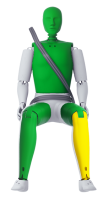 Passenger
Passenger
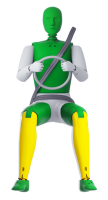 Driver
Driver
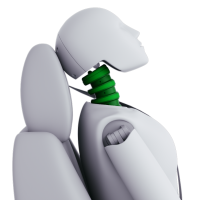 Front Seat
Front Seat
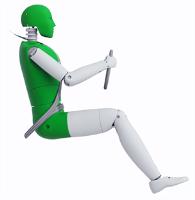 Car
Car
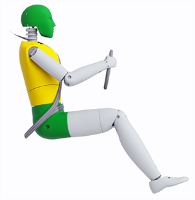 Pole
Pole
- Good
- Adequate
- Marginal
- Weak
- Poor
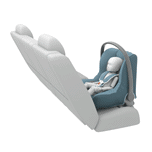
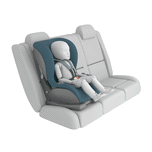
Passenger
outboard
center
Fitted to the vehicle as standard
Not fitted to the test vehicle but available as option
Not Available
Forward movement of the 3 year dummy, sat in a forward facing restraint, was not excessive in the frontal impact. In the side impact, both the 3 year and the 18 month dummy were properly contained within the protective shells of their restraints, minimising the likelihood of head contact with parts of the car's interior. Mercedes-Benz's 'CPOD' system is available as an option. The system automatically deactivates the front passenger airbag to allow suitably equipped Mercedes-Benz child seats to be used rearward-facing in that seating position. The system does not work with other child restraints and was not rewarded by Euro NCAP. The dangers of using a rearward-facing restraint in that seating position without first disabling the airbag were clearly explained in the vehicle.
- Good
- Adequate
- Marginal
- Weak
- Poor
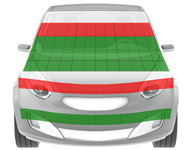
Head Impact 18.0 Pts
Pelvis Impact 0.0 Pts
Leg Impact 6.0 Pts
The A-Class is equipped with an 'active' bonnet. Sensors detect when a pedestrian has been struck and raise the bonnet to provide greater clearance to the hard structures which lie beneath. Mercedes-Benz showed that the system worked reliably over a range of speeds and for different statures of pedestrian so the tests were done with the bonnet in the deployed position. In all areas likely to be struck by the head of a child, protection was good and the A-Class scored maximum points in this area. In those areas on the bonnet surface where an adult's head would strike, protection was also good but poor protection was provided in areas where the head would strike the windscreen, for example. The front edge of the bonnet offered poor protection but the bumper provided good protection in all areas tested, and scored maximum points,
- Good
- Adequate
- Marginal
- Weak
- Poor
| System Name | ESP | |
| Performance | ||
| Vehicle Yaw Rate @ COS + 1.00 s | 7.38% | meets ECE requirements |
| Vehicle Yaw Rate @ COS + 1.75 s | 7.13% | meets ECE requirements |
| Lateral Displacement @ BOS + 1.07 s | 3.14 m | meets ECE requirements |
| Applies To | All seats | ||
| Warning | Driver Seat | Front Passenger(s) | Rear Passenger(s) |
| Visual | |||
| Audible | |||
|
|||
Electronic stability control is standard equipment and met Euro NCAP's test requirements. A seatbelt reminder is standard for both front and rear seats. A driver-set sped-limitation device is available as an option but did not meet Euro NCAP's fitment requirements for assessement in 2012.
- Specifications
- Safety Equipment
- Videos
- Advanced Rewards
- Rating Validity
Specifications
Tested Model Mercedes-Benz A180 1.6 petrol 'Urban', LHD
Body Type - 5 door hatchback
Year Of Publication 2012
Kerb Weight 1320kg
VIN From Which Rating Applies - applies to all A-Class of the specification tested
Class Small Family Car
Safety Equipment
Note: Other equipment may be available on the vehicle but was not considered in the test year.
Fitted to the vehicle as standard
Fitted to the vehicle as option
Not fitted to the test vehicle but available as option
Not Available
Not Applicable
Videos
Advanced Rewards

Attention Assist is a drowsiness detection system that warns drivers to prevent them falling asleep momentarily whilst driving. It will prompt them to take a break before it's too late.

or AEB is a system that firstly helps to avoid accidents by identifying critical situations early and warning the driver; and secondly reduces the severity of crashes which cannot be avoided by lowering the speed of collision. In some cases, it prepares restraint systems for impact and applies the brakes of the vehicle.
This technology was introduced in the Overall Rating in 2014.

Manufacturers take care to ensure that their safety systems are effective for occupants of different sizes and for those sitting in different positions. However, the very best levels of protection can be achieved when the interaction between occupant and restraint systems is optimised. Several manufacturers have developed systems designed to allow a vehicle's protection systems to operate most effectively during an impact.
This technology was partly introduced in the Overall Rating since 2014 as part of AEB Car-to-Car.
Rating Validity







Find more information in the General Comments section of the assessment
 Share
Share
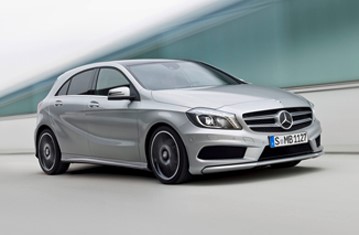







The passenger compartment remained stable in the frontal impact. The A-Class is fitted as an option with Mercedes-Benz's 'PRE-SAFE' ® system which primes the restraint and protection systems in readiness for a collision. The tested cars were not fitted with this system. Dummy readings showed good protection of most body regions, including the knees and femurs, of both front seat occupants. Mercedes-Benz showed that a similar level of protection would be available to occupants of different sizes and to those sat in different seating positions. In the side barrier test, the A-Class scored maximum points, with good protection of all body areas. In the more severe side pole test, protection of the head and pelvis was good and that of the chest and abdomen was adequate. The seat and head restraint provided good protection against whiplash injuries in the event of a rear-end impact. Mercedes-Benz's 'Collision Prevention Assist' (CPA) is standard equipment and is designed to help drivers avoid or mitigate longitudinal accidents where whiplash injuries might occur.